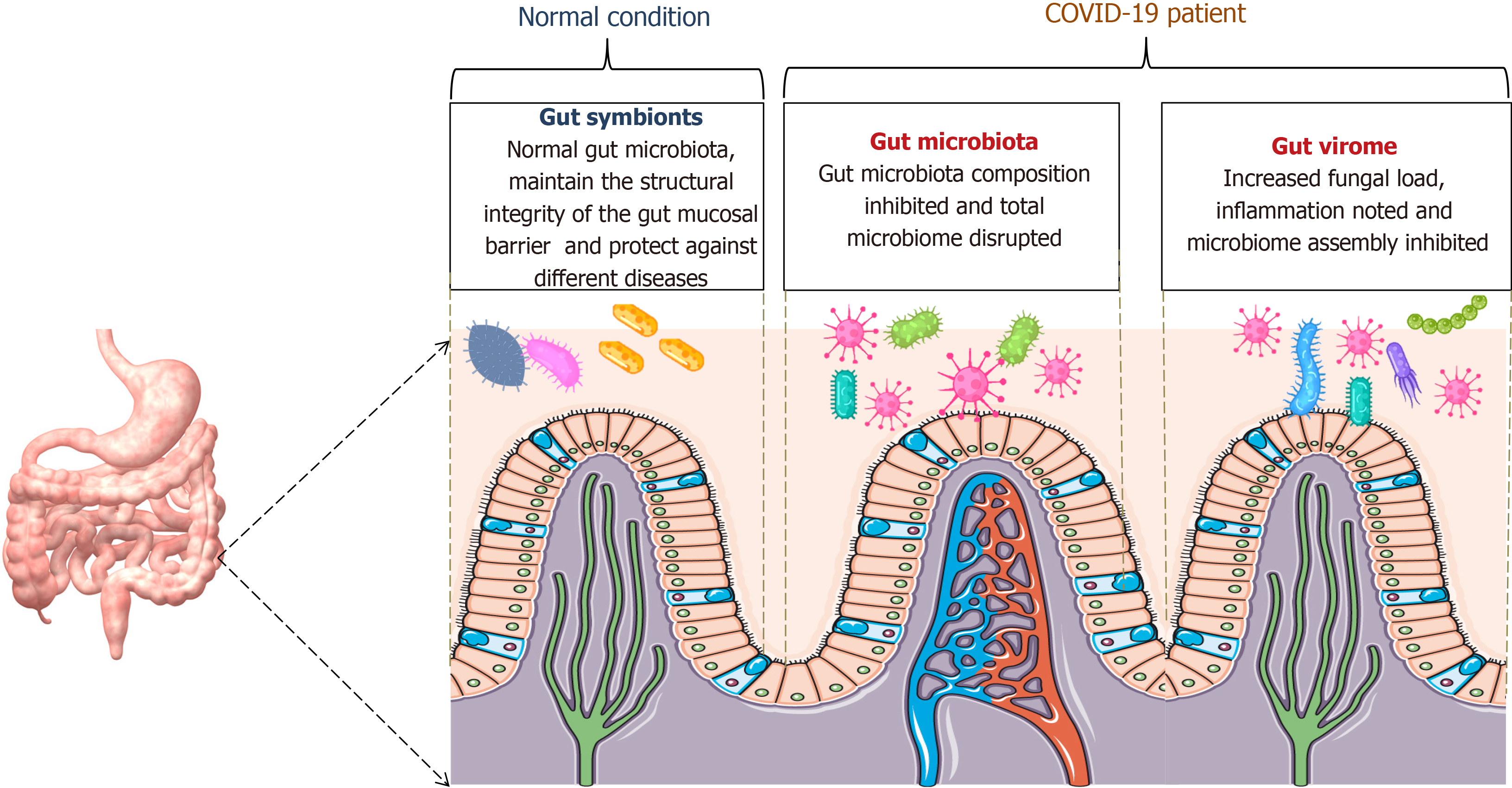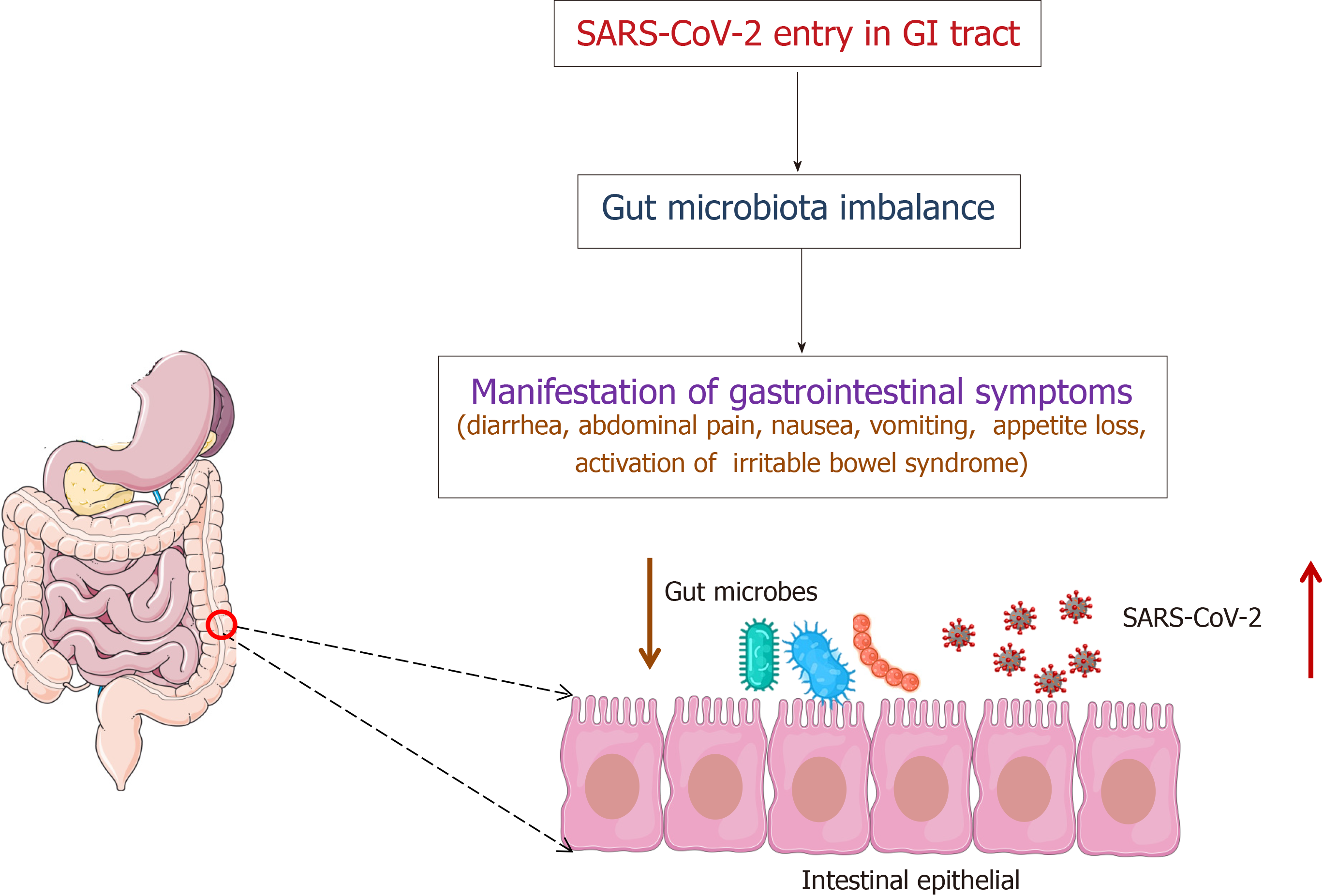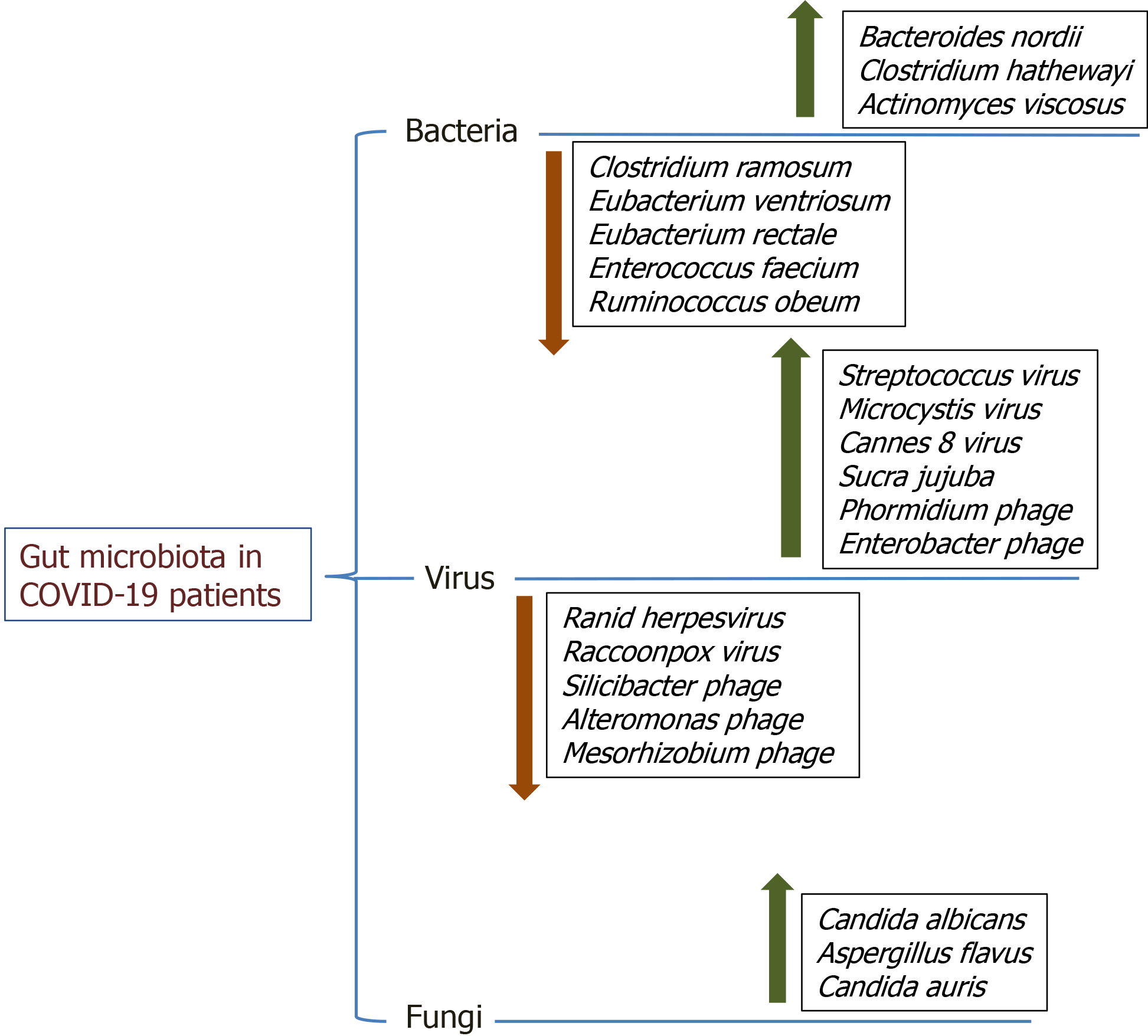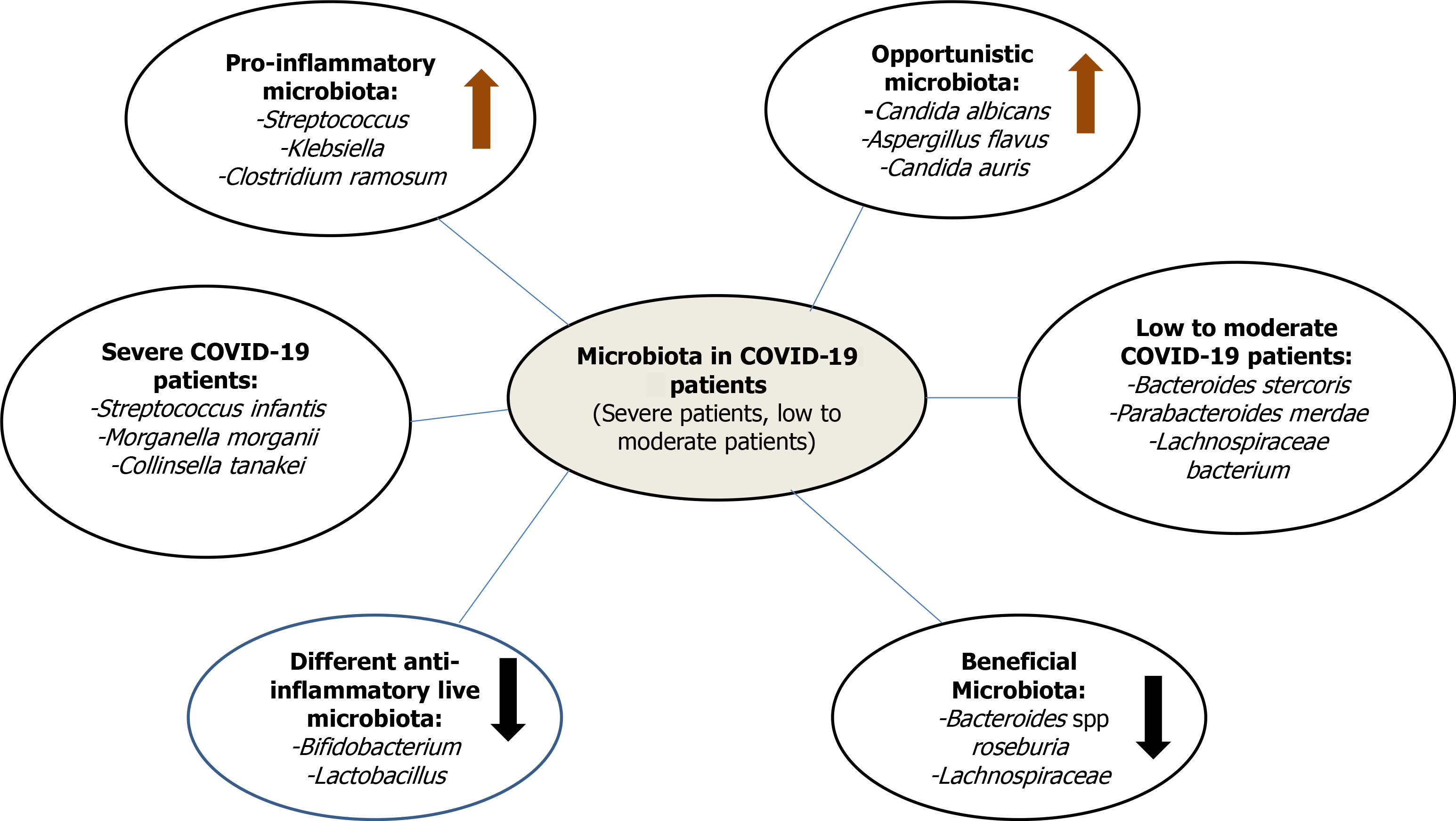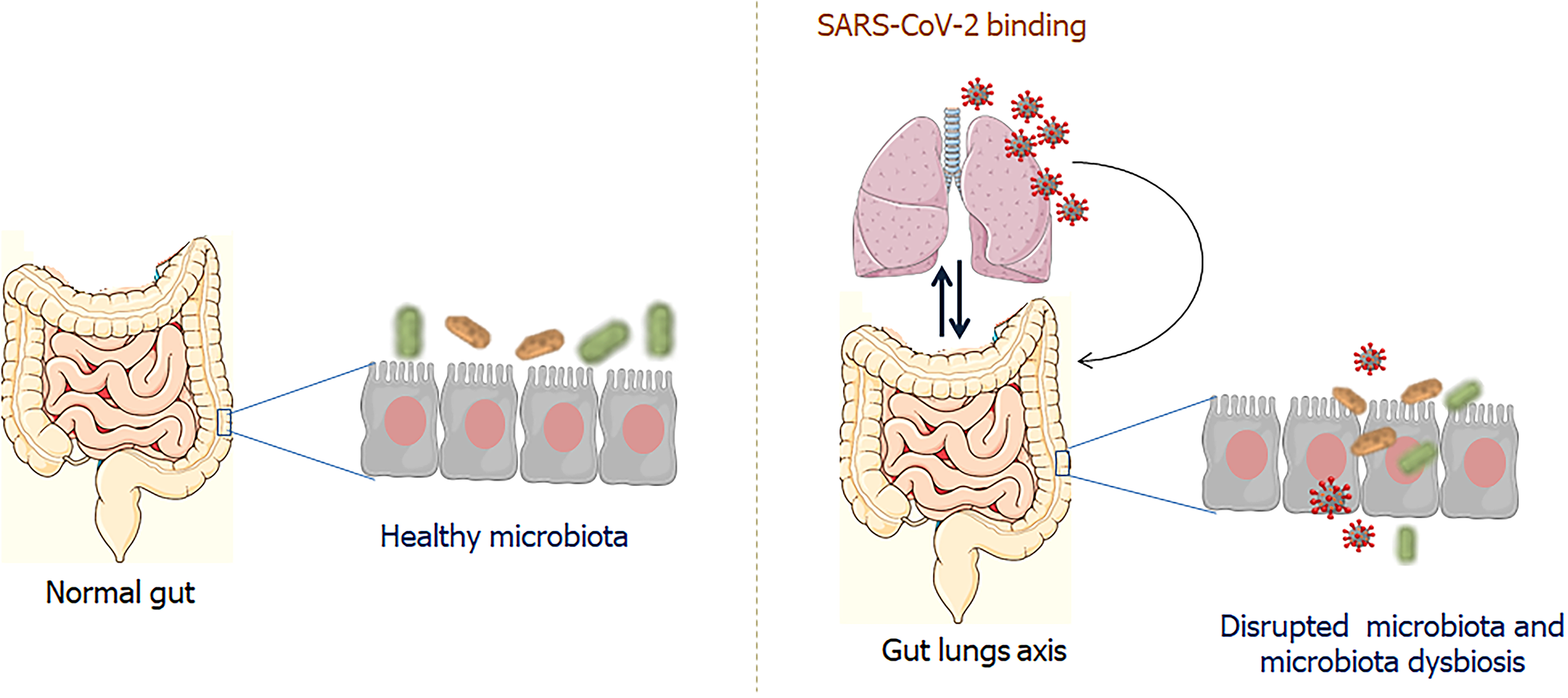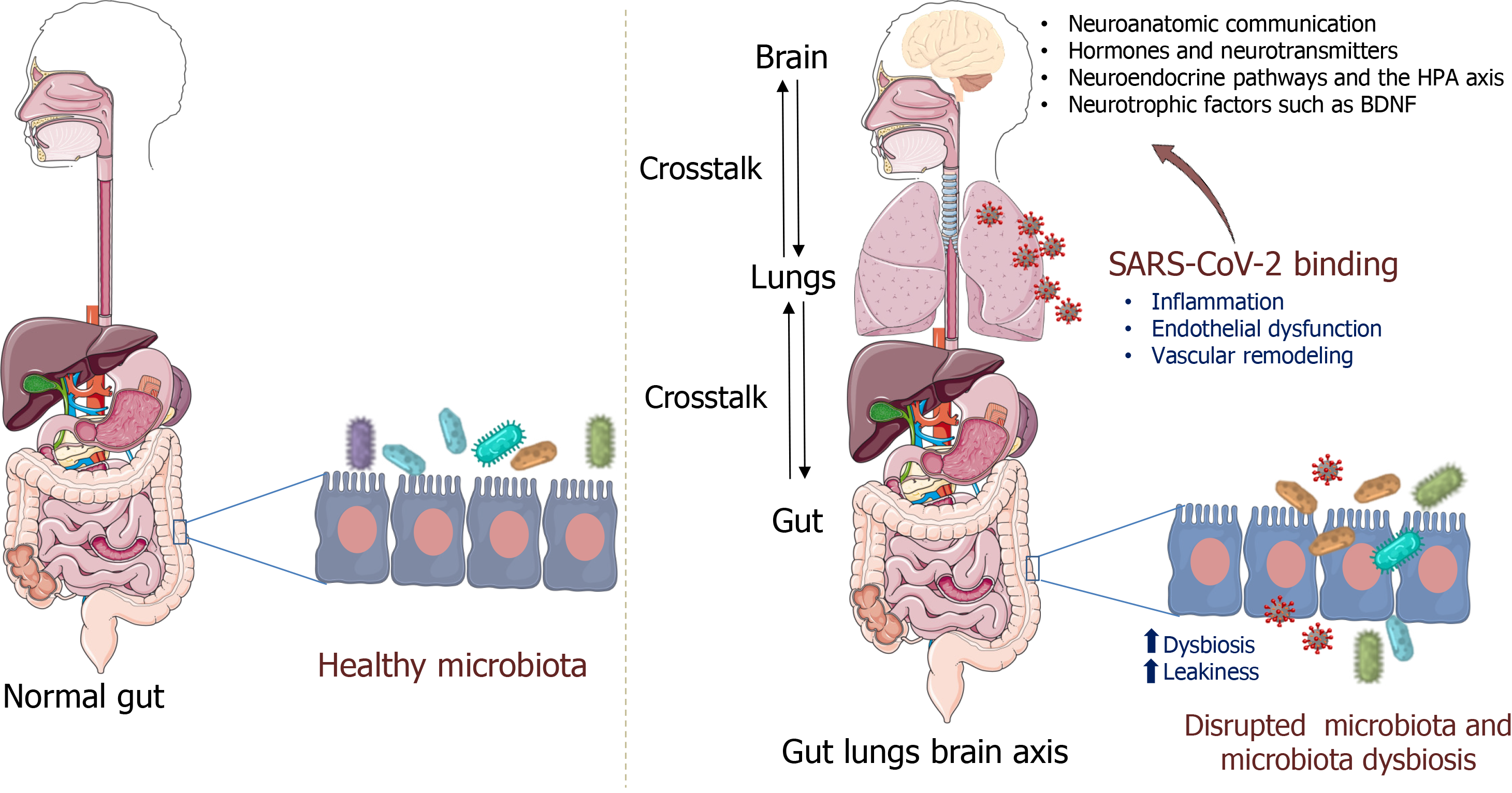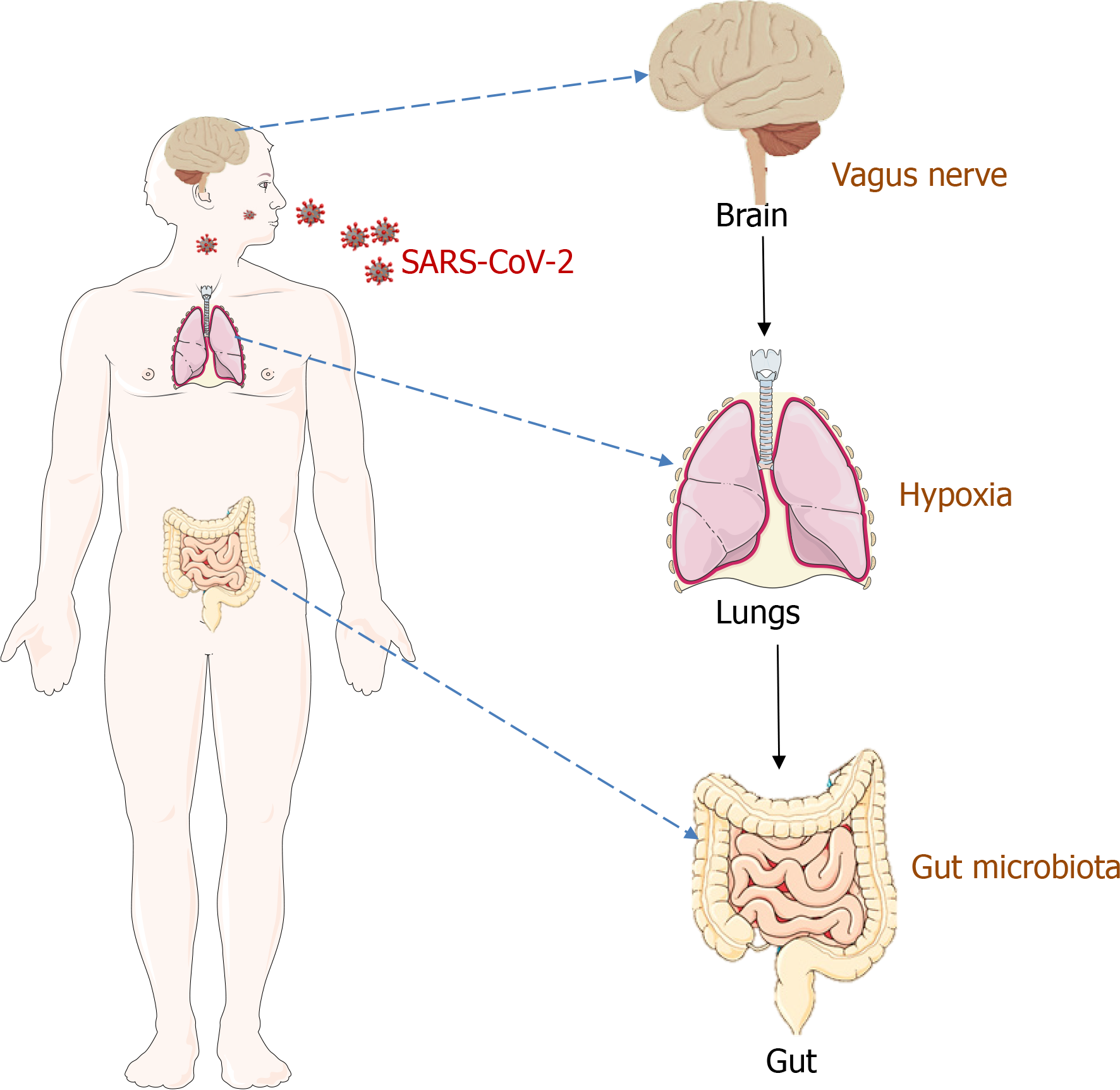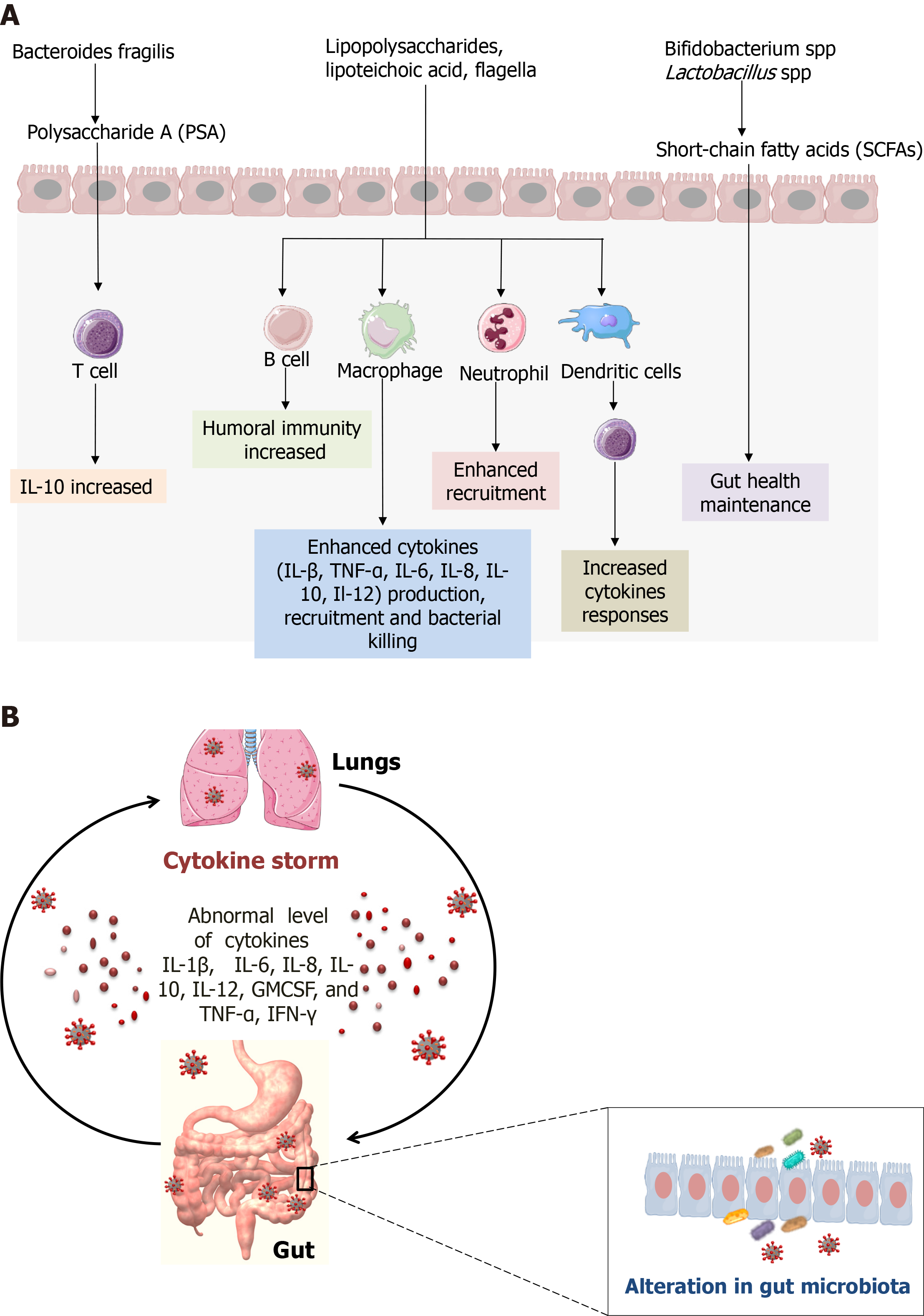Copyright
©The Author(s) 2022.
World J Gastroenterol. Jul 7, 2022; 28(25): 2802-2822
Published online Jul 7, 2022. doi: 10.3748/wjg.v28.i25.2802
Published online Jul 7, 2022. doi: 10.3748/wjg.v28.i25.2802
Figure 1 The schematic diagram shows normal healthy gut and the incidence in gut microbiota and gut virome in coronavirus disease 2019 patients.
COVID-19: Coronavirus disease 2019.
Figure 2 The schematic diagram illustrates the severe acute respiratory syndrome coronavirus 2 entry in the body, causes of gut microbiota imbalance which assists in manifesting the gastrointestinal symptoms in coronavirus disease 2019 patients.
GI: Gastrointestinal; SARS-CoV-2: Severe acute respiratory syndrome coronavirus 2.
Figure 3 The diagram illustrates increased or decreased gut microbiota in coronavirus disease 2019 patients, including bacterial, viral, and fungal populations.
COVID-19: Coronavirus disease 2019.
Figure 4 The diagram illustrates different types of mapped gut microbiota in coronavirus disease 2019 patients.
Pro-inflammatory microbiota, opportunistic microbiota, the microbiome in severe coronavirus disease 2019 (COVID-19) patients, and the microbiome in low to moderate COVID-19 patients, anti-inflammatory microbiota, and beneficial microbiota. COVID-19: Coronavirus disease 2019.
Figure 5 The diagram points out the normal gut and its microbial association.
The figure also illustrates the crosstalk between the microbiome and gut-lung axis. SARS-CoV-2: Severe acute respiratory syndrome coronavirus 2.
Figure 6 The diagram describes the normal gut and its microbial association.
The figure also illustrates the crosstalk between the microbiome and gut-brain-lung axis. BDNF: Brain-derived neurotrophic factor; HPA: Hypothalamic-pituitary-adrenal; SARS-CoV-2: Severe acute respiratory syndrome coronavirus 2.
Figure 7 The figure illustrates an association between gut microbiota and hypoxia in coronavirus disease 2019 patients, and it is connected with central nervous system.
SARS-CoV-2: Severe acute respiratory syndrome coronavirus 2.
Figure 8 The figure illustrates normal gut microbiota and immunological consequences, and coronavirus disease 2019 related altered gut microbiota associated inflammation.
A: Normal gut microbiota and immunological consequences for healthy gut; B: Coronavirus disease 2019 (COVID-19) related altered gut microbiota associated inflammation. The inflammatory condition in COVID-19 patients causes the abnormal release of different cytokines, such as interleukin-1 beta (IL-1β), IL-6, IL-8, IL-10, IL-12, granulocyte-macrophage colony-stimulating factor, tumor necrosis factor-alpha, and interferon-gamma. PSA: Polysaccharide A; SCFA: Short-chain fatty acid; IL-1β: Interleukin-1 beta; IL-6: Interleukin-6; GMCSF: Granulocyte-macrophage colony-stimulating factor; TNF-α: Tumor necrosis factor-alpha; IFN-γ: Interferon-gamma.
- Citation: Chakraborty C, Sharma AR, Bhattacharya M, Dhama K, Lee SS. Altered gut microbiota patterns in COVID-19: Markers for inflammation and disease severity. World J Gastroenterol 2022; 28(25): 2802-2822
- URL: https://www.wjgnet.com/1007-9327/full/v28/i25/2802.htm
- DOI: https://dx.doi.org/10.3748/wjg.v28.i25.2802









